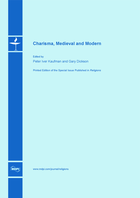Charisma, Medieval and Modern
A special issue of Religions (ISSN 2077-1444).
Deadline for manuscript submissions: closed (30 November 2012) | Viewed by 140842
Special Issue Editors
Interests: medieval revivalism; medieval crowd psychology; cult of saints
2. George Mathews and Virginia Brinkley Modlin Chair, Jepson School, University of Richmond, Richmond, VA 23173, USA
Interests: christian traditions: late antique, medieval and early modern European spirituality, politics and drama
Special Issues, Collections and Topics in MDPI journals
Special Issue Information
Dear Colleagues,
Gary Dickson has composed the lead essay for this special topics issue of Religions. Dr. Dickson is the author of an acclaimed Children’s Crusade (2008), which sifts contemporary evidence for that controversial and compelling phenomenon and studies it alongside other religious revivals to enrich our understanding of religious enthusiasm and the writing of “mythistory.” With his wide-ranging study of “charisma” in this journal, Dickson asks if (how and why) the term “charisma,” which Weber “half-secularized” and “granted right of entry into the academic world,” can still serve scholars studying religious leadership, cultic practice, contemporary demagogues, and devotees. Religions welcomes brief comments/responses to Dickson’s essay, “Charisma, Medieval and Modern” (ca. 1,500 to 3,000) words and longer contributions on leadership, charisma, and hagiography.
Dr. Gary Dickson
Prof. Dr. Peter Iver Kaufman
Guest Editors
Keywords
- celebrity
- charisma
- cult
- heroism
- social memory
- Weber






